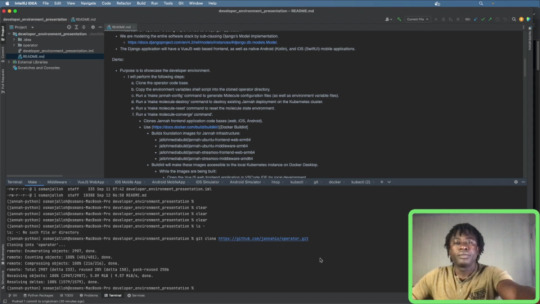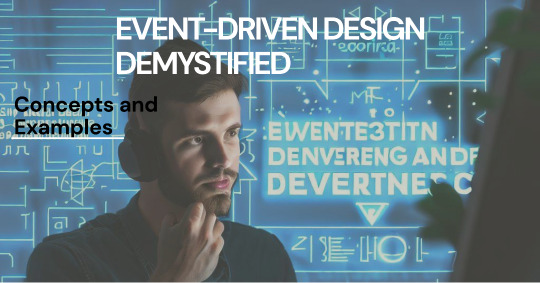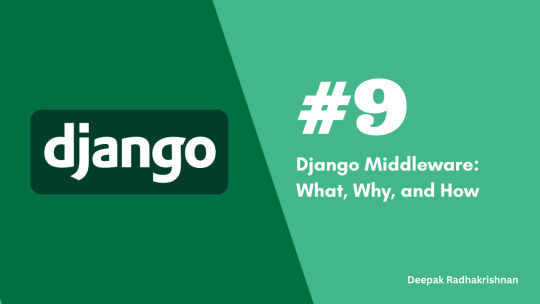#Middleware development
Explore tagged Tumblr posts
Text
💢
y'know, sometimes i wonder if i was born with a dick, i MIGHT be listened to for a change in work 👍
#ooc#frustrated 😠#tldr changes are being made and when i asked could i test them#i basically got told no. that they're going into our develop ('main') code branch as is#so fuck it if it breaks our api middleware i don't wanna fucking hear about it
3 notes
·
View notes
Text
Innovate, inspire, achieve—turn your dreams into digital realities
WBC Software Lab | Software Development & IT Solutions | Karaikudi
Are you ready to bring your ideas to life? At Wbc Software Lab, we specialize in crafting beautiful, functional websites and applications that help your business stand out in the digital world.
Whether you need a sleek, user-friendly website or a powerful, custom application, we have the expertise to deliver exactly what you're looking for. Our team of experts works closely with you to understand your vision and turn it into reality.

#software development#IT solutions#ERP#.NET#PHP development#Karaikudi#IT training#cloud services#mobile app development#enterprise integration#middleware solutions#Tally ERP#business management software
0 notes
Text
Addressing middleware's function in embedded systems
How do flawless embedded systems function? How do they communicate with the outside world and with each other? Middleware is the response to the previous question. By serving as a mediator between the operating system and application software, middleware enables data exchange and hardware component control in embedded systems. We'll look at middleware's function and how it contributes to embedded systems' excellent performance in this article. Before delving into middleware's function, let's clarify what embedded systems actually are.

Computer systems with real-time computing constraints that are specifically engineered to carry out a particular task are known as embedded systems. They are used in many different applications, including industrial control systems, automobiles, and medical devices. Typically, embedded systems have constrained memory, processing, and communication bandwidth. Because of these limitations, software and hardware components must be carefully optimized to satisfy system requirements.
Let's now discuss middleware. Software that resides in the space between an operating system and an application is known as middleware. It offers a range of services that facilitate information sharing and communication between various embedded system components. Middleware acts as an intermediary between various hardware parts and between the application software and the hardware. It hides complex hardware details and complexities to give application software a standardized interface.
The various types of middleware can be distinguished by their respective functionalities. An embedded system's various components can communicate with one another thanks to communication middleware. It offers a collection of services and communication protocols that make data transfer between various components easier. Message-oriented middleware (MOM) and remote procedure call (RPC) middleware are two types of middleware used in communication. For many embedded systems, real-time computing is essential, and real-time middleware offers services for this purpose. To put it briefly, real-time middleware offers synchronization and scheduling services to guarantee that tasks are completed by the deadline. The real-time Java platform and the real-time operating system (RTOS) are two instances of real-time middleware.
In addition, middleware can offer fault tolerance, security, and data storage services. While security middleware offers services for secure authentication and communication, data storage middleware makes it possible for data to be stored permanently. Redundancy and system recovery services are offered by fault tolerance middleware.
Developing and maintaining embedded systems is getting harder as they have more hardware components and communication protocols, which makes them more complex. Middleware plays a critical role in streamlining the development and maintenance process by giving the application software a consistent interface through which it can communicate with a variety of hardware components without having to worry about the intricate details of each interface. This middleware feature eases the burden of managing complex hardware details and facilitates seamless system integration.
The scalability that middleware offers is another important advantage. By abstracting away the complexity of hardware interfaces and communication protocols, middleware offers a scalable solution as embedded systems become more complex and data exchange between various components increases. It's a crucial part of contemporary embedded systems because it makes it simple to scale the system up or down and adds new components. In order to guarantee the system operates smoothly and effectively, middleware is crucial. All things considered, middleware is a crucial part of contemporary embedded systems, providing a host of advantages that boost system flexibility and interoperability, optimize system performance and efficiency, and ease development and maintenance.
Conclusion: In order for contemporary embedded systems to carry out their intended tasks, middleware is a crucial component. System integration and scalability are seamless due to its uniform interface to application software, ability to abstract away complexities in hardware interfaces and communication protocols, and services for real-time computing, data storage, security, and fault tolerance, which are essential for system functionality. Creating and maintaining embedded systems would be much more difficult without middleware.
Differentiating itself from competitors, Silicon Signals Pvt Ltd offers cutting-edge engineering solutions that close the gap between industry demands and technology. Silicon Signals is unique in that it specializes in embedded systems, which have real-time computing constraints that necessitate careful software and hardware component optimization. Silicon Signals is able to offer end-to-end solutions for embedded systems that other companies might not be able to provide because of its expertise in middleware, firmware, and hardware design. Silicon Signals is dedicated to delivering state-of-the-art solutions that satisfy the specific requirements of its clients, with a strong focus on innovation, quality, and customer satisfaction.
In examining the function of middleware in embedded systems, I hope you found this article to be interesting and educational. As you may already be aware, middleware is essential for facilitating data exchange and communication between various embedded system components, hiding the technical specifics of hardware interfaces at a high level, and offering real-time computing, data storage, security, and fault tolerance functions. We encourage you to visit our website for additional information if you're interested in learning more about embedded systems and how Silicon Signals can assist in bridging the gap between technology and industry needs.
#embeddedsoftware#embeddedsystems#embeddedtechnology#iotsolutions#iot development services#linuxdebugging#middleware
0 notes
Text
Mastering Express.js: The Node.js Framework
Learn how to master Express.js, the popular Node.js framework, with this comprehensive guide. Set up a server, handle routes, implement middleware, and more.
Introduction Express.js is a minimal and flexible Node.js web application framework that provides a robust set of features for web and mobile applications. It is an essential tool for Node.js developers, simplifying the process of building server-side applications. This guide will take you through the fundamentals of Express.js, from installation to building a basic web server, handling routes,…

View On WordPress
#asynchronous programming#Express.js#JavaScript#Middleware#Node.js#routing#server-side development#web development
0 notes
Text
SnapLogic | SnapLogic iPaaS | SnapLogic Middleware (oditeksolutions.com)

SnapLogic: Cloud-Based Integration Platform with AI-Powered Automation
Seamless Data Integration: Key to Business Success
Connecting data sources seamlessly and efficiently is a crucial aspect of modern business operations. In today’s data-driven business environment, organizations need to leverage data from multiple sources to make informed decisions and gain a competitive edge. The ability to integrate data from disparate systems and applications has become critical for businesses looking to drive growth, optimize operations, and enhance customer experience.
SnapLogic: AI-Powered Integration Platform as a Service
What is SnapLogic! It is an Integration Platform as a Service (iPaaS) solution that helps organizations achieve this by offering a cloud-based platform that connects on-premise business modules, SaaS applications, and cloud data sources. Powered by AI, SnapLogic architecture provides intelligent deployment for businesses of all sizes, automating integration projects from development to maintenance and deployment in hybrid environments. With over 400 pre-built connectors, SnapLogic middleware minimizes data transfer efforts and ensures that data flows smoothly across different databases and applications.
OdiTek Service Offerings
OdiTek provides cloud integration services for businesses in different industries, utilizing SnapLogic. Our experts have good experience in designing and implementing SnapLogic-based solutions to automate integration projects across hybrid environments. Our services include configuring pre-built connectors to ensure smooth data flows and optimizing integration processes through consultation. By leveraging SnapLogic iPaaS, we help businesses achieve efficiency, agility, and competitiveness in the digital world.
Key Features of SnapLogic
Snaps
SnapLogic’s Snaps enable code-free integration, providing data insights and positive business outcomes without reviewing API documentation
Ultra Pipelines
Enable high-throughput and highly available cloud-to-cloud and ground-to-ground deployment for critical integrations with fast and scalable execution
B2B Integration & API Management
The integration platform connects multiple applications via B2B gateway, enables EDI gateway connections, and provides easy API management across environments
Extract Load Transform (ELT)
Transform data with SnapLogic’s Snaps and extract summarized data from cloud warehouses to multiple endpoints
Pipeline Synthesis
SnapLogic’s machine learning identifies user intent and suggests end-to-end integration pipeline building, enabling faster integration and allowing more focus on strategic tasks
Fast Data Loader
Gather data from various channels to understand customer needs and access customer insights with pre-built pipelines through SnapLogic’s no-code, point-and-click interface
Our Service Offering
Consulting Services
Uninterrupted Workflow
Optimizing the data integration
Access of Automation 360 Control Room
Automation of data transfer
Efficient API & EDI management
Architecting Services
Assessing system & challenges.
Identifying Integration patterns
On-prem/cloud app deployment
Capacity planning & assessment
System & app architecture review
Implementing Services
Testing and debugging of integrations
Automated deployment & support
App alerts configuration & fine-tuning
Configuration and customization
Compatibility with existing systems
Development Services
Reusable components, connectors
Custom APIs and integrations
Real-time data orchestration
Developing Custom connectors
Transforming data across formats
Designing Services
Business requirements analysis
Custom workflow design
Data mapping and transformation
Error handling & monitoring tools
Secure data transfer as per norms
Managed Services
Reduced costs & increased agility
Proactive & preventive Monitoring
Legacy and Disparate Data optimization
Easy collaboration via shared IT assets
Anypoint Platform environment
Platform Support & Services
24×7 support and monitoring
Performance tuning of applications
Automation & process improvements
Providing weekly & monthly reports
Root cause analysis & effective solution
Maintenance & Operation
Maintenance & timely updating tickets
Security audits for performance growth
Security and privacy compliance concerns
Customized maintenance contracts
Continuous Remote and desktop support
Planning & Testing Services
Defining timelines & resources
Assessing & analysing current state
Unit testing & system testing
Identifying and troubleshooting the issues
Post-deployment monitoring and testing
OdiTek’s SnapLogic Expertise
Oditek offers cloud integration services for businesses in various industries. Our experienced team integrates, designs and implements SnapLogic-based solutions to seamlessly connect data sources. With SnapLogic’s iPaaS, we automate integration projects and configure pre-built connectors to ensure smooth data flows across applications and data stores.
Seamless Integration
SnapLogic offers unique integration capabilities and code-free structure link cloud, on-premise, and big data endpoints in real time across APIs, databases, and apps
Save Integration Costs
Enterprises can accelerate integration development by 70% and simplify tasks for tech specialists with SnapLogic’s AI-powered design feature, resulting in increased ROI
Reduce Ramp-Time
Cloud-based and AI-powered platforms provide real-time automation and enable monitoring and measuring of employee experience for improved productivity
Efficient Administration Console
SnapLogic’s intuitive web-based interface of the platform, empowers a SnapLogic developer to manage user tasks remotely with ease.
#SnapLogic#What is SnapLogic#SnapLogic Architecture#SnapLogic Middleware#SnapLogic Developer#SnapLogic iPaaS
1 note
·
View note
Text

Side Job - Home Office during Covid...
Development setup for a custom HSPD-12 middleware solution using a Raspberry 4 device loaded with USB redirect over the Internet for remote vetting and provisioning.
0 notes
Text
A Comprehensive Presentation On Jannah Middleware Application Part 1
In this video, we are taking a deeper look into the Jannah Middleware application. The middleware application is a Django based application. Django is a Python framework for web application development.
A Comprehensive Presentation On Jannah Middleware Application Part 1 Video Highlights We are showcasing Computer Science in various flavors. We are taking a deeper look into the Jannah Middleware application. The middleware application is a Django (Python framework) based application. The code base is on Github.com https://github.com/jannahio/middleware In Computer Science, context…

View On WordPress
#&039;gotcha&039;#compute#computer science#Data#Database#Discovery#django#Educational Trip#Eye-Opening#istio#jannah.io#kubeflow#Kubernetes#middleware#PostgresDB#python#quirks#Sightseeing#Software Developer#Software Engineering#Software Services#Students#Tech Business Developers#Tech Venture Capitalists
0 notes
Text
Event-Driven Design Demystified: Concepts and Examples
🚀 Discover how this cutting-edge architecture transforms software systems with real-world examples. From e-commerce efficiency to smart home automation, learn how to create responsive and scalable applications #EventDrivenDesign #SoftwareArchitecture
In the world of software architecture, event-driven design has emerged as a powerful paradigm that allows systems to react and respond to events in a flexible and efficient manner. Whether you’re building applications, microservices, or even IoT devices, understanding event-driven design can lead to more scalable, responsive, and adaptable systems. In this article, we’ll delve into the core…

View On WordPress
#Asynchronous Communication#Decoupling Components#E-commerce Order Processing#Event Broker Paradigm#Event Sources and Consumers#Event-driven architecture#Event-Driven Examples#Event-Driven Paradigm#Event-Triggered Workflows#Microservices and Events#Middleware in Event-Driven Design#Modular Development#Reactive Systems#Real-Time Responsiveness#Scalable Software Systems#Smart Home Automation#Social Media Notifications#Software Design Patterns#System Event Handling#User Experience Enhancement
1 note
·
View note
Text
One of the fun things about web development these days is that nothing is self-contained anymore and there are so many layers of middleware talking to middleware talking to middleware that even "turning it off and back on again" has become an expert-level troubleshooting step because identifying exactly what needs to be turned off and back on again is a process in itself. I've been on multiple calls today alone where the resolution to a tech support issue has been "we restarted the XYZ", and the response from the client's own developers, who presumably set the stupid thing up in the first place, has been "we have an XYZ?"
1K notes
·
View notes
Text
Microsoft XBOX 360 - Sonic World Adventure (Sonic Unleashed)
Title: Sonic World Adventure / ソニック ワールドアドベンチャー
Developer/Publisher: Sega (Sonic Team)
Release date: 19 February 2009
Catalogue No.: HEC-00002
Genre: 3D Action Adventure

Sega's Sonic team development division, learning from Sonic 06's mistakes, made the XBOX 360 perform some pretty impressive tasks in their demos, some of which were used in their games. Sonic Unleashed is one of those games (the other one being 2019's Shin Sakura Taisen, a visual novel for the PS4). The game marks the first-ever time a Sonic game debuted with a rendering system dubbed by Sonic Team as the "Hedgehog Engine", designed specifically to handle the drawing of 3D geometry and environments in a fast-paced setting. (The game still uses CRI Middleware and Havok technologies in some parts).
As a result, compared to the likes of Sonic 2006, Sonic Unleashed is capable of producing CGI film quality graphics very similar to those from the best Disney/Pixar animated film properties. Yoshihisa Hashimoto who was the Director of this game at the time, spent months analyzing video games, CGI films, and even people and places in real life. He came to the conclusion that current-generation games are missing an element known in the computer animation field as Global Illumination.
This allows for a light source to hit a scene, and light is reflected off every object in the environment. To cover the vast amounts of calculations that needed to be processed, they also came up with a system that connected 100 computers for the team to distribute the workload. This enabled them to complete all the lighting calculations for an action stage (which is about 6-8 miles long) in 2 or 3 days.
Hashimoto's team also developed a technology called Light Field, which blended the characters naturally into the environments. With this technology, Sonic can run through an action stage while the light is being reflected off him naturally as if he “belongs” there (in contrast to past games where Sonic looks out of place in several environments). As a result, Sonic Unleashed manages to stand out from the rest of the platformers of its age in that rather than lowering the quality down to PS2 levels (as was the case with some early PS3 and 360 games around 2005-2007), the game uses pseudo-raytracing, coupled with the introduction of the then-novel Boost gameplay mechanic and a custom control scheme dedicated to the Werehog/Night levels, as well as a seamless day/night cycle to provide fast and smooth looking 3D environments.
Coupled together with the XBOX 360's great sprite and polygon capabilities for enemies and explosions and polygon-built ships (mainly those from Dr. Eggman), along with the PS1-quality ease of development that made the XBOX 360 the king in the eyes of general gamers, makes Sonic Unleashed look like quite a feast for the ears, as well as the eyes.
So how does it play? Well, I'm not too sure if it went down well in Malaysia but judging by how hard it is to find a copy, I'd say it wasn't well received (in my area). Most households in Malaysia probably only owned a PS2 back in the day, so the PS2 version of Unleashed is much more common. Globally though, and on the Sonic circles, I remember Sonic Unleashed being showered with praise the world over, with high critic scores and glowing fan and user reviews. This could be because Sonic Unleashed fixed the flawed controls that plagued '06 and turned the franchise's reputation from being stained into a great sendoff for the future, with great gameplay, a killer story, and an AWESOME mix of orchestral, rock, and miscellaneous soundtrack genres as you played all the way from Apotos (based on Mykonos, Greece) to Eggmanland (based on Luna Park Sydney).
There is a lot to blast and search for as well as getting yourself lost quite often in the Open World Hubs (^o^;) Oh and about the gameplay, the Daytime stages are some of the BEST that you'll ever see in terms of graphical fidelity (only bested by Frontiers, Shadow Generations, and the upcoming Crossworlds), and the Werehog stages, it's debatable, but it is pretty good to me. It's not 100% perfect though - there are some minor flaws such as very weird frame-rate issues, and falling down easily when using your ring energy, the Werehog levels can be very long but not as bad as other worse beat-em-ups on the 360 such as TMNT Turtles in Time Re-Shelled and Golden Axe Beast Rider. I wanted to call it "God of War inspired" but that would be me pulling the Sony fanboy card. Let's just say the combat reminded me of either Spike Out, Streets of Rage, or even Batman Returns on the Super Famicom, maybe a touch of Arkham Asylum and Arkham City (though these are later games). You need to replay levels to get the medals which become harder to find.
Bottom line, if you're into the odd type of action platformer with a killer story, then I think Sonic Unleashed will suit you. This game is compatible with XBOX ONE and XBOX SERIES consoles, and if you play it on an XBOX SERIES S or X, you get the added bonus of 60 FPS boost mode which is really awesome.





youtube
youtube
#xbox 360#microsoft xbox#sonic the hedgehog#sonic unleashed#sonic world adventure#sonic the werehog#chip sonic unleashed#light gaia#dark gaia#Youtube
15 notes
·
View notes
Text

Everything for Developers is on a Single Platform.
Developed by Difo Finance, this multi-chain middleware platform offers everything a dApp developer needs on a single platform.
26 notes
·
View notes
Text
WBC Software Lab | Software Development & IT Solutions | Karaikudi
WBC Software Lab emphasizes its 25+ years of expertise in IT training, software development, ERP solutions, and enterprise services for clients in various regions, including Asia and the Middle East. They focus on technologies like .NET, PHP, cloud services, and mobile apps.

#software development#IT solutions#ERP#.NET#PHP development#Karaikudi#IT training#cloud services#mobile app development#enterprise integration#middleware solutions#Tally ERP#business management software
0 notes
Text
Integrating Third-Party Tools into Your CRM System: Best Practices
A modern CRM is rarely a standalone tool — it works best when integrated with your business's key platforms like email services, accounting software, marketing tools, and more. But improper integration can lead to data errors, system lags, and security risks.

Here are the best practices developers should follow when integrating third-party tools into CRM systems:
1. Define Clear Integration Objectives
Identify business goals for each integration (e.g., marketing automation, lead capture, billing sync)
Choose tools that align with your CRM’s data model and workflows
Avoid unnecessary integrations that create maintenance overhead
2. Use APIs Wherever Possible
Rely on RESTful or GraphQL APIs for secure, scalable communication
Avoid direct database-level integrations that break during updates
Choose platforms with well-documented and stable APIs
Custom CRM solutions can be built with flexible API gateways
3. Data Mapping and Standardization
Map data fields between systems to prevent mismatches
Use a unified format for customer records, tags, timestamps, and IDs
Normalize values like currencies, time zones, and languages
Maintain a consistent data schema across all tools
4. Authentication and Security
Use OAuth2.0 or token-based authentication for third-party access
Set role-based permissions for which apps access which CRM modules
Monitor access logs for unauthorized activity
Encrypt data during transfer and storage
5. Error Handling and Logging
Create retry logic for API failures and rate limits
Set up alert systems for integration breakdowns
Maintain detailed logs for debugging sync issues
Keep version control of integration scripts and middleware
6. Real-Time vs Batch Syncing
Use real-time sync for critical customer events (e.g., purchases, support tickets)
Use batch syncing for bulk data like marketing lists or invoices
Balance sync frequency to optimize server load
Choose integration frequency based on business impact
7. Scalability and Maintenance
Build integrations as microservices or middleware, not monolithic code
Use message queues (like Kafka or RabbitMQ) for heavy data flow
Design integrations that can evolve with CRM upgrades
Partner with CRM developers for long-term integration strategy
CRM integration experts can future-proof your ecosystem
#CRMIntegration#CRMBestPractices#APIIntegration#CustomCRM#TechStack#ThirdPartyTools#CRMDevelopment#DataSync#SecureIntegration#WorkflowAutomation
2 notes
·
View notes
Text
Getting Started with Industrial Robotics Programming

Industrial robotics is a field where software engineering meets automation to drive manufacturing, assembly, and inspection processes. With the rise of Industry 4.0, the demand for skilled robotics programmers is rapidly increasing. This post introduces you to the fundamentals of industrial robotics programming and how you can get started in this exciting tech space.
What is Industrial Robotics Programming?
Industrial robotics programming involves creating software instructions for robots to perform tasks such as welding, picking and placing objects, painting, or quality inspection. These robots are typically used in factories and warehouses, and are often programmed using proprietary or standard languages tailored for automation tasks.
Popular Robotics Programming Languages
RAPID – Used for ABB robots.
KRL (KUKA Robot Language) – For KUKA industrial robots.
URScript – Used by Universal Robots.
Fanuc KAREL / Teach Pendant Programming
ROS (Robot Operating System) – Widely used open-source middleware for robotics.
Python and C++ – Common languages for simulation and integration with sensors and AI.
Key Components in Robotics Programming
Motion Control: Programming the path, speed, and precision of robot arms.
Sensor Integration: Use of cameras, force sensors, and proximity detectors for adaptive control.
PLC Communication: Integrating robots with Programmable Logic Controllers for factory automation.
Safety Protocols: Programming emergency stops, limit switches, and safe zones.
Human-Machine Interface (HMI): Designing interfaces for operators to control and monitor robots.
Sample URScript Code (Universal Robots)
# Move to position movej([1.0, -1.57, 1.57, -1.57, -1.57, 0.0], a=1.4, v=1.05) # Gripper control (example function call) set_digital_out(8, True) # Close gripper sleep(1) set_digital_out(8, False) # Open gripper
Software Tools You Can Use
RoboDK – Offline programming and simulation.
ROS + Gazebo – Open-source tools for simulation and robotic control.
ABB RobotStudio
Fanuc ROBOGUIDE
Siemens TIA Portal – For integration with industrial control systems.
Steps to Start Your Journey
Learn the basics of industrial robotics and automation.
Familiarize yourself with at least one brand of industrial robot (ABB, KUKA, UR, Fanuc).
Get comfortable with control systems and communication protocols (EtherCAT, PROFINET).
Practice with simulations before handling real robots.
Study safety standards (ISO 10218, ANSI/RIA R15.06).
Real-World Applications
Automated welding in car manufacturing.
High-speed pick and place in packaging.
Precision assembly of electronics.
Material handling and palletizing in warehouses.
Conclusion
Industrial robotics programming is a specialized yet rewarding field that bridges software with real-world mechanics. Whether you’re interested in working with physical robots or developing smart systems for factories, gaining skills in robotics programming can open up incredible career paths in manufacturing, automation, and AI-driven industries.
2 notes
·
View notes
Text
Django Middleware: What, Why, and How
Django is a robust web framework that provides a variety of features to simplify web development. One of these powerful features is middleware. Middleware is a way to process requests globally before they reach the view or after the view has processed them. This blog post will delve into what Django middleware is, why it’s essential, and how you can create and use your own middleware in Django…

View On WordPress
#custom middleware#Django middleware#Django Tutorial#middleware best practices#Python#request processing#response processing#web development
0 notes
Text
This Week in Rust 593
Hello and welcome to another issue of This Week in Rust! Rust is a programming language empowering everyone to build reliable and efficient software. This is a weekly summary of its progress and community. Want something mentioned? Tag us at @ThisWeekInRust on X (formerly Twitter) or @ThisWeekinRust on mastodon.social, or send us a pull request. Want to get involved? We love contributions.
This Week in Rust is openly developed on GitHub and archives can be viewed at this-week-in-rust.org. If you find any errors in this week's issue, please submit a PR.
Want TWIR in your inbox? Subscribe here.
Updates from Rust Community
Newsletters
The Embedded Rustacean Issue #42
This Week in Bevy - 2025-03-31
Project/Tooling Updates
Fjall 2.8
EtherCrab, the pure Rust EtherCAT MainDevice, version 0.6 released
A process for handling Rust code in the core kernel
api-version: axum middleware for header based version selection
SALT: a VS Code Extension, seeking participants in a study on Rust usabilty
Observations/Thoughts
Introducing Stringleton
Rust Any Part 3: Finally we have Upcasts
Towards fearless SIMD, 7 years later
LLDB's TypeSystems: An Unfinished Interface
Mutation Testing in Rust
Embedding shared objects in Rust
Rust Walkthroughs
Architecting and building medium-sized web services in Rust with Axum, SQLx and PostgreSQL
Solving the ABA Problem in Rust with Hazard Pointers
Building a CoAP application on Ariel OS
How to Optimize your Rust Program for Slowness: Write a Short Program That Finishes After the Universe Dies
Inside ScyllaDB Rust Driver 1.0: A Fully Async Shard-Aware CQL Driver Using Tokio
Building a search engine from scratch, in Rust: part 2
Introduction to Monoio: A High-Performance Rust Runtime
Getting started with Rust on Google Cloud
Miscellaneous
An AlphaStation's SROM
Real-World Verification of Software for Cryptographic Applications
Public mdBooks
[video] Networking in Bevy with ECS replication - Hennadii
[video] Intermediate Representations for Reactive Structures - Pete
Crate of the Week
This week's crate is candystore, a fast, persistent key-value store that does not require LSM or WALs.
Thanks to Tomer Filiba for the self-suggestion!
Please submit your suggestions and votes for next week!
Calls for Testing
An important step for RFC implementation is for people to experiment with the implementation and give feedback, especially before stabilization.
If you are a feature implementer and would like your RFC to appear in this list, add a call-for-testing label to your RFC along with a comment providing testing instructions and/or guidance on which aspect(s) of the feature need testing.
No calls for testing were issued this week by Rust, Rust language RFCs or Rustup.
Let us know if you would like your feature to be tracked as a part of this list.
Call for Participation; projects and speakers
CFP - Projects
Always wanted to contribute to open-source projects but did not know where to start? Every week we highlight some tasks from the Rust community for you to pick and get started!
Some of these tasks may also have mentors available, visit the task page for more information.
If you are a Rust project owner and are looking for contributors, please submit tasks here or through a PR to TWiR or by reaching out on X (formerly Twitter) or Mastodon!
CFP - Events
Are you a new or experienced speaker looking for a place to share something cool? This section highlights events that are being planned and are accepting submissions to join their event as a speaker.
* Rust Conf 2025 Call for Speakers | Closes 2025-04-29 11:59 PM PDT | Seattle, WA, US | 2025-09-02 - 2025-09-05
If you are an event organizer hoping to expand the reach of your event, please submit a link to the website through a PR to TWiR or by reaching out on X (formerly Twitter) or Mastodon!
Updates from the Rust Project
438 pull requests were merged in the last week
Compiler
allow defining opaques in statics and consts
avoid wrapping constant allocations in packed structs when not necessary
perform less decoding if it has the same syntax context
stabilize precise_capturing_in_traits
uplift clippy::invalid_null_ptr_usage lint as invalid_null_arguments
Library
allow spawning threads after TLS destruction
override PartialOrd methods for bool
simplify expansion for format_args!()
stabilize const_cell
Rustdoc
greatly simplify doctest parsing and information extraction
rearrange Item/ItemInner
Clippy
new lint: char_indices_as_byte_indices
add manual_dangling_ptr lint
respect #[expect] and #[allow] within function bodies for missing_panics_doc
do not make incomplete or invalid suggestions
do not warn about shadowing in a destructuring assigment
expand obfuscated_if_else to support {then(), then_some()}.unwrap_or_default()
fix the primary span of redundant_pub_crate when flagging nameless items
fix option_if_let_else suggestion when coercion requires explicit cast
fix unnested_or_patterns suggestion in let
make collapsible_if recognize the let_chains feature
make missing_const_for_fn operate on non-optimized MIR
more natural suggestions for cmp_owned
collapsible_if: prevent including preceeding whitespaces if line contains non blanks
properly handle expansion in single_match
validate paths in disallowed_* configurations
Rust-Analyzer
allow crate authors to control completion of their things
avoid relying on block_def_map() needlessly
fix debug sourceFileMap when using cppvsdbg
fix format_args lowering using wrong integer suffix
fix a bug in orphan rules calculation
fix panic in progress due to splitting unicode incorrectly
use medium durability for crate-graph changes, high for library source files
Rust Compiler Performance Triage
Positive week, with a lot of primary improvements and just a few secondary regressions. Single big regression got reverted.
Triage done by @panstromek. Revision range: 4510e86a..2ea33b59
Summary:
(instructions:u) mean range count Regressions ❌ (primary) - - 0 Regressions ❌ (secondary) 0.9% [0.2%, 1.5%] 17 Improvements ✅ (primary) -0.4% [-4.5%, -0.1%] 136 Improvements ✅ (secondary) -0.6% [-3.2%, -0.1%] 59 All ❌✅ (primary) -0.4% [-4.5%, -0.1%] 136
Full report here.
Approved RFCs
Changes to Rust follow the Rust RFC (request for comments) process. These are the RFCs that were approved for implementation this week:
No RFCs were approved this week.
Final Comment Period
Every week, the team announces the 'final comment period' for RFCs and key PRs which are reaching a decision. Express your opinions now.
Tracking Issues & PRs
Rust
Tracking Issue for slice::array_chunks
Stabilize cfg_boolean_literals
Promise array::from_fn is generated in order of increasing indices
Stabilize repr128
Stabilize naked_functions
Fix missing const for inherent pointer replace methods
Rust RFCs
core::marker::NoCell in bounds (previously known an [sic] Freeze)
Cargo,
Stabilize automatic garbage collection.
Other Areas
No Items entered Final Comment Period this week for Language Team, Language Reference or Unsafe Code Guidelines.
Let us know if you would like your PRs, Tracking Issues or RFCs to be tracked as a part of this list.
New and Updated RFCs
Allow &&, ||, and ! in cfg
Upcoming Events
Rusty Events between 2025-04-02 - 2025-04-30 🦀
Virtual
2025-04-02 | Virtual (Indianapolis, IN, US) | Indy Rust
Indy.rs - with Social Distancing
2025-04-03 | Virtual (Nürnberg, DE) | Rust Nurnberg DE
Rust Nürnberg online
2025-04-03 | Virtual | Ardan Labs
Communicate with Channels in Rust
2025-04-05 | Virtual (Kampala, UG) | Rust Circle Meetup
Rust Circle Meetup
2025-04-08 | Virtual (Dallas, TX, US) | Dallas Rust User Meetup
Second Tuesday
2025-04-10 | Virtual (Berlin, DE) | Rust Berlin
Rust Hack and Learn
2025-04-15 | Virtual (Washington, DC, US) | Rust DC
Mid-month Rustful
2025-04-16 | Virtual (Vancouver, BC, CA) | Vancouver Rust
Rust Study/Hack/Hang-out
2025-04-17 | Virtual and In-Person (Redmond, WA, US) | Seattle Rust User Group
April, 2025 SRUG (Seattle Rust User Group) Meetup
2025-04-22 | Virtual (Dallas, TX, US) | Dallas Rust User Meetup
Fourth Tuesday
2025-04-23 | Virtual (Cardiff, UK) | Rust and C++ Cardiff
**Beyond embedded - OS development in Rust **
2025-04-24 | Virtual (Berlin, DE) | Rust Berlin
Rust Hack and Learn
2025-04-24 | Virtual (Charlottesville, VA, US) | Charlottesville Rust Meetup
Part 2: Quantum Computers Can’t Rust-Proof This!"
Asia
2025-04-05 | Bangalore/Bengaluru, IN | Rust Bangalore
April 2025 Rustacean meetup
2025-04-22 | Tel Aviv-Yafo, IL | Rust 🦀 TLV
In person Rust April 2025 at Braavos in Tel Aviv in collaboration with StarkWare
Europe
2025-04-02 | Cambridge, UK | Cambridge Rust Meetup
Monthly Rust Meetup
2025-04-02 | Köln, DE | Rust Cologne
Rust in April: Rust Embedded, Show and Tell
2025-04-02 | München, DE | Rust Munich
Rust Munich 2025 / 1 - hybrid
2025-04-02 | Oxford, UK | Oxford Rust Meetup Group
Oxford Rust and C++ social
2025-04-02 | Stockholm, SE | Stockholm Rust
Rust Meetup @Funnel
2025-04-03 | Oslo, NO | Rust Oslo
Rust Hack'n'Learn at Kampen Bistro
2025-04-08 | Olomouc, CZ | Rust Moravia
3. Rust Moravia Meetup (Real Embedded Rust)
2025-04-09 | Girona, ES | Rust Girona
Rust Girona Hack & Learn 04 2025
2025-04-09 | Reading, UK | Reading Rust Workshop
Reading Rust Meetup
2025-04-10 | Karlsruhe, DE | Rust Hack & Learn Karlsruhe
Karlsruhe Rust Hack and Learn Meetup bei BlueYonder
2025-04-15 | Leipzig, DE | Rust - Modern Systems Programming in Leipzig
Topic TBD
2025-04-15 | London, UK | Women in Rust
WIR x WCC: Finding your voice in Tech
2025-04-19 | Istanbul, TR | Türkiye Rust Community
Rust Konf Türkiye
2025-04-23 | London, UK | London Rust Project Group
Fusing Python with Rust using raw C bindings
2025-04-24 | Aarhus, DK | Rust Aarhus
Talk Night at MFT Energy
2025-04-24 | Edinburgh, UK | Rust and Friends
Rust and Friends (evening pub)
2025-04-24 | Manchester, UK | Rust Manchester
Rust Manchester April Code Night
2025-04-25 | Edinburgh, UK | Rust and Friends
Rust and Friends (daytime coffee)
2025-04-29 | Paris, FR | Rust Paris
Rust meetup #76
North America
2025-04-03 | Chicago, IL, US | Chicago Rust Meetup
Rust Happy Hour
2025-04-03 | Montréal, QC, CA | Rust Montréal
April Monthly Social
2025-04-03 | Saint Louis, MO, US | STL Rust
icu4x - resource-constrained internationalization (i18n)
2025-04-06 | Boston, MA, US | Boston Rust Meetup
Kendall Rust Lunch, Apr 6
2025-04-08 | New York, NY, US | Rust NYC
Rust NYC: Building a full-text search Postgres extension in Rust
2025-04-10 | Portland, OR, US | PDXRust
TetaNES: A Vaccination for Rust—No Needle, Just the Borrow Checker
2025-04-14 | Boston, MA, US | Boston Rust Meetup
Coolidge Corner Brookline Rust Lunch, Apr 14
2025-04-17 | Nashville, TN, US | Music City Rust Developers
Using Rust For Web Series 1 : Why HTMX Is Bad
2025-04-17 | Redmond, WA, US | Seattle Rust User Group
April, 2025 SRUG (Seattle Rust User Group) Meetup
2025-04-23 | Austin, TX, US | Rust ATX
Rust Lunch - Fareground
2025-04-25 | Boston, MA, US | Boston Rust Meetup
Ball Square Rust Lunch, Apr 25
Oceania
2025-04-09 | Sydney, NS, AU | Rust Sydney
Crab 🦀 X 🕳️🐇
2025-04-14 | Christchurch, NZ | Christchurch Rust Meetup Group
Christchurch Rust Meetup
2025-04-22 | Barton, AC, AU | Canberra Rust User Group
April Meetup
South America
2025-04-03 | Buenos Aires, AR | Rust en Español
Abril - Lambdas y más!
If you are running a Rust event please add it to the calendar to get it mentioned here. Please remember to add a link to the event too. Email the Rust Community Team for access.
Jobs
Please see the latest Who's Hiring thread on r/rust
Quote of the Week
If you write a bug in your Rust program, Rust doesn’t blame you. Rust asks “how could the compiler have spotted that bug”.
– Ian Jackson blogging about Rust
Despite a lack of suggestions, llogiq is quite pleased with his choice.
Please submit quotes and vote for next week!
This Week in Rust is edited by: nellshamrell, llogiq, cdmistman, ericseppanen, extrawurst, U007D, joelmarcey, mariannegoldin, bennyvasquez, bdillo
Email list hosting is sponsored by The Rust Foundation
Discuss on r/rust
2 notes
·
View notes